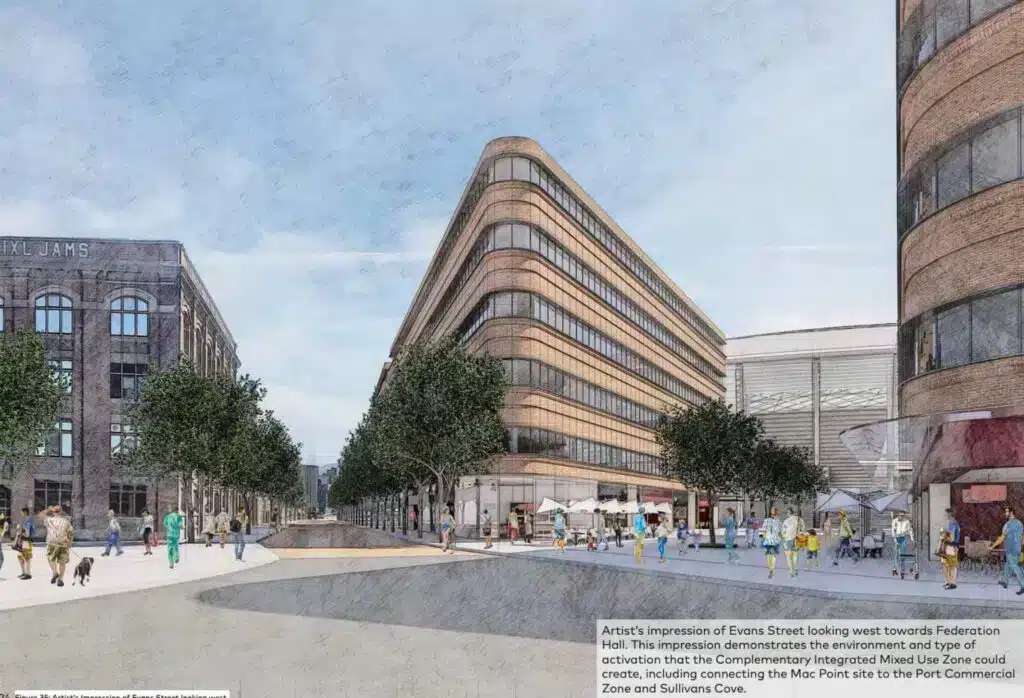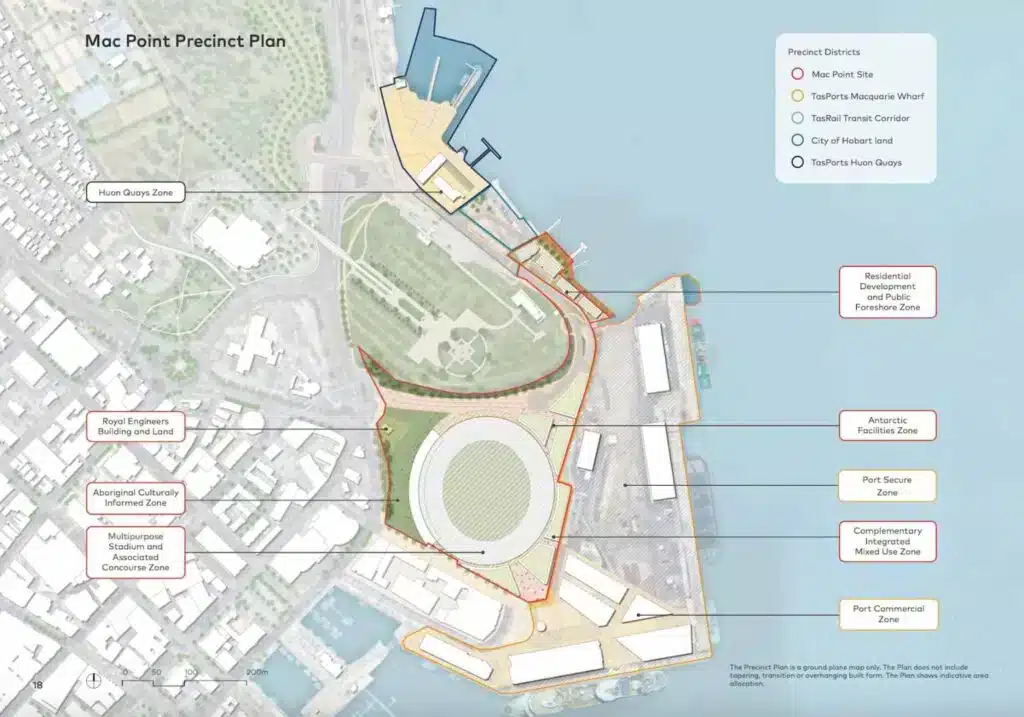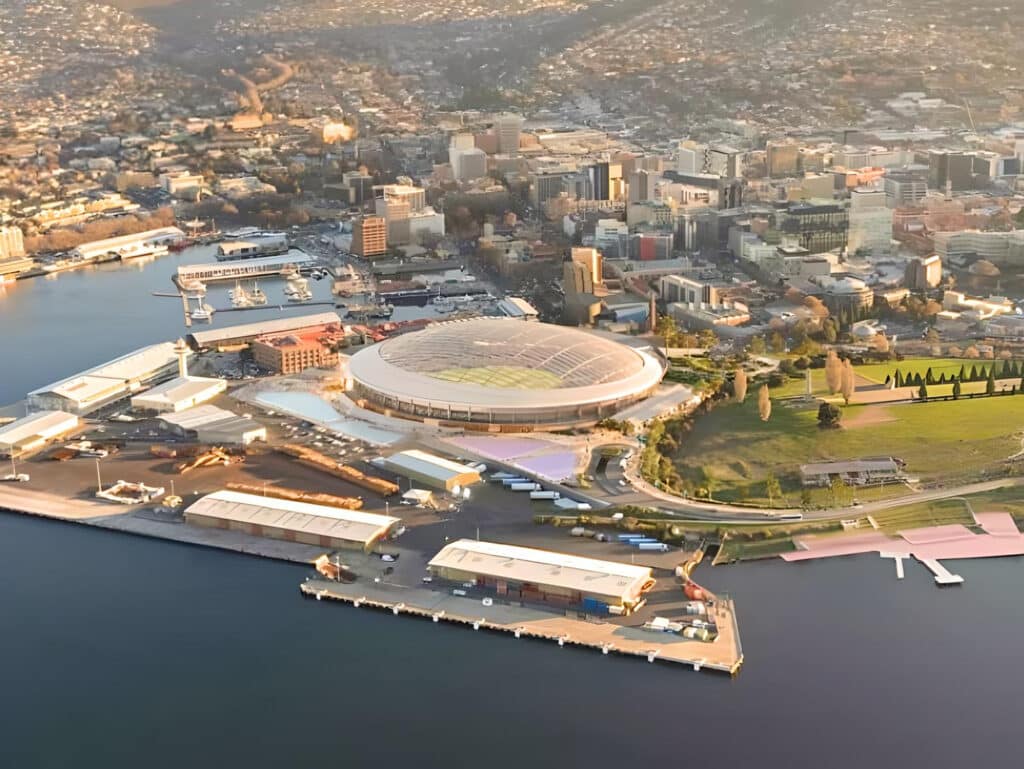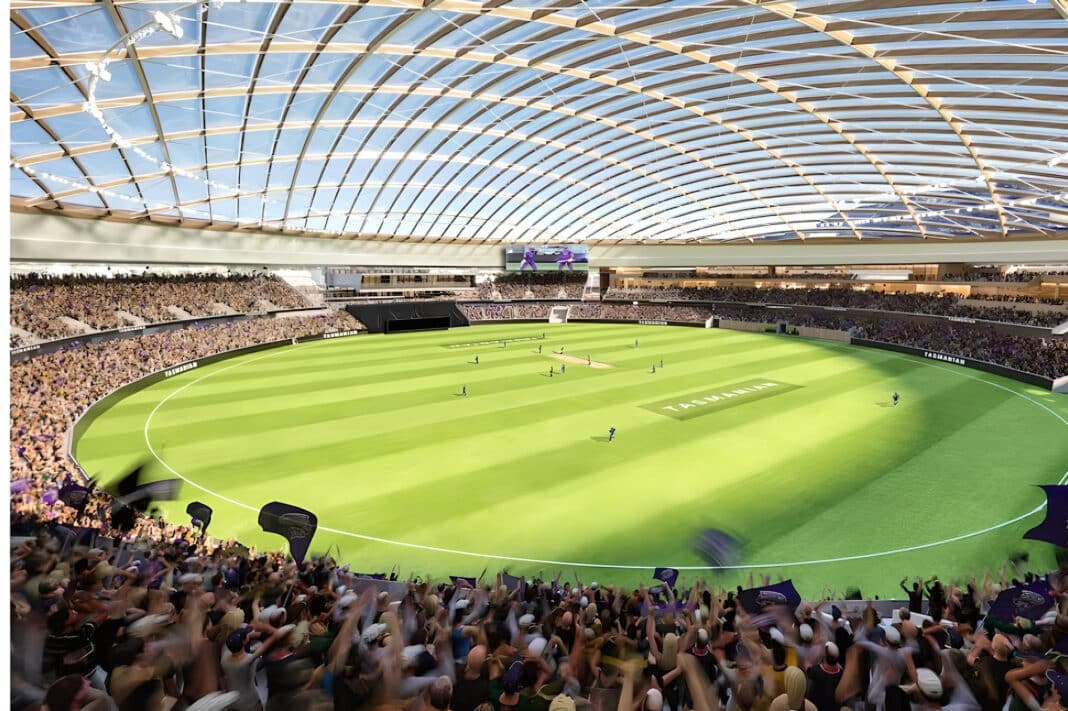Tasmania’s new Macquarie Point Stadium, dubbed a “once-in-a-lifetime” build, will now cost $775 million after Macquarie Point Development Corporation, the body responsible for developing the stadium, revealed updated costings to the Tasmanian Planning Commission today.
The new plans, part of a 260-page submission to the state, also include $190 million for the roof, including inbuilt parts and lighting. Billed as “the world’s largest timber-roofed stadium,” the proposal is supported by 4,000 pages of documentation supporting the new costings.
According to Ann Beach, CEO of the Macquarie Point Development Corporation, the project team is now looking to reduce the cost of the indoor stadium—considered a project of state significance—by $60 million to meet the $715 million budget flagged in June 2024.
If you look at stadia across the world and the country, they’re delivered in a staged fashion, so what we need to do is work through what we can deliver with making sure we’ve got an amazing stadium from day one, but we’re also providing for future expansion.
Ann Beach, CEO of the Macquarie Point Development Corporation, responding to reporters today.
It comes as Wood Central revealed that concept designs for the 23,000-seat fully roofed stadium — which will host the state’s newly minted AFL club, the Tasmania Devils — include a compact seating bowl design, a “woven-style” timber facade and a fixed dome translucent roof.



Wood Central understands that Tasmanian timbers will feature internally and externally in the stadium’s facade. Lead architect Cox Architecture took inspiration from the former railway roundhouse structure, which was part of the old Hobart Rail Yard from 1915 until the 1980s.
World’s largest timber roof to be made with fabric ‘pillows’
The engineering highlight is without question the fully translucent roof—designed by German firm Schlaich Bergermann Partners—featuring ETFE (ethylene tetrafluoroethylene) “pillows” and mixed-material steel and timber supporting structure – which are supported by 800mm timber and steel beams.
ETFE is transparent and almost impossible to tear when used in single-layer applications. The film is structurally stable and highly durable. Thanks to the “lotus effect,” it’s easy to keep clean and offers an excellent cost-benefit ratio.
Already used in Nike’s Hayward Field Stadium – the venue for the US Track and Field Olympic trials – and the Grand Palais Éphémère, which hosted the Olympic wrestling and Judo in Paris, the ETFE roof “will allow light in, support natural turf growth and avoid the need for large light towers,” said Nic Street, Tasmania’s Sports Minister.

The 160-metre roof will be incredibly lightweight and durable, too…
According to Martin Eddleston, the principal engineer with Makmax Australia, a construction company specialising in materials like ETFE, the fluoro polymer plastic used in the pillow roof is rolled and comes like a ream of paper or carpet.
It is then transformed from a flat sheet of plastic into a 3D shape, seen in stadiums, arenas, and structures worldwide.
“A couple of companies developed it, and there are probably only two or three places in the world that manufacture performance plastic,” Mr Eddleston told ABC Radio Hobart in July. “It’s incredibly lightweight,” he said, “it’s one of the only things you could put on a roof this scale and get an economical structure.”
That’s doing the primary support job and the ETFE is really the second resistance spanning shorter distances.
According to Martin Eddleston, the 800mm timber and steel beams will do the vast majority of the heavy lifting.
Mr Eddleston said that unlike traditional roof sheeting, such as metal or polycarbonate, which sits atop framing, ETFE was tensioned using similar technology to sailing: “The onset of this technology started from the sailing industry. It’s a more heavily engineered and scaled-up version of your backyard shade sail.”
The concept design shows air-inflated cushions across the roof: “So you’ll have two layers of the material and a blower unit system that creates this pneumatically inflated cushion system over the roof,” he said.
“That helps resist the wind load, hail load and any other applied load on the system.”
- Is it possible to build a stadium out of timber? In Wood Central’s special feature, Professor Greg Nolan looks at the potential to make a timber-rich Macquarie Point stadium.






